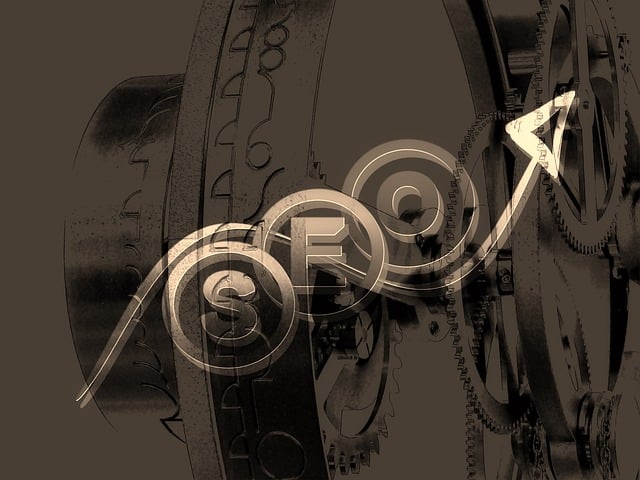White-Hat SEO Techniques focus on ethical practices to boost search engine rankings while maintaining user trust and website integrity. These include Keyword Research for identifying relevant, low-competition keywords; creating high-quality content that offers genuine value; On-Page optimization like optimizing meta tags, headings, and URLs; earning backlinks through valuable content and industry expertise; mobile optimization for all devices; and regular audits and updates to adapt to algorithm changes. By adhering to these techniques, websites enhance user experience, search engine understanding, and long-term rankings in a healthy online environment.
In today’s digital landscape, effective yet ethical SEO is non-negotiable. This article explores powerful White-Hat SEO Techniques to elevate your online presence without cutting corners. We’ll guide you through a strategic approach, from understanding the fundamentals of White-Hat SEO and Keyword Research, to crafting compelling High-Quality Content and optimizing key elements like Meta Tags and URL Structure. Discover proven strategies for Link Building, User Experience, and regular Audits, ensuring your website thrives in a dynamic search engine environment.
Understanding White-Hat SEO: The Ethical Approach

White-Hat SEO refers to a set of ethical techniques and practices designed to improve search engine rankings while adhering to search engine guidelines. Unlike Black-Hat SEO, which employs manipulative tactics that can lead to penalties, White-Hat SEO focuses on providing value to users and enhancing the overall quality of online content. These techniques prioritize long-term sustainability over quick fixes, ensuring that websites remain relevant and trustworthy in the eyes of both users and search engines.
By focusing on creating high-quality, relevant content, optimizing website structure for ease of navigation, and building genuine links through organic means, White-Hat SEO Techniques not only help search engines better understand a site’s purpose but also enhance user experience. This ethical approach ensures that any improvements in ranking are earned and sustainable, thereby fostering a healthier online ecosystem.
Keyword Research: Finding Relevant, Long-Tail Keywords

In the realm of SEO, Keyword Research is a cornerstone of successful optimization, especially when employing White-Hat SEO Techniques. It involves identifying relevant search terms that potential customers are using to find products or services related to yours. One effective strategy is focusing on long-tail keywords, which are more specific and less competitive than their shorter counterparts. These keywords often reflect the actual search queries users type into search engines, making them invaluable for targeting the right audience.
By delving into tools like Google Keyword Planner or SEMrush, you can uncover these hidden gems—long-tail keywords with substantial search volume but lower competition. Incorporating such keywords naturally within your content ensures that it resonates with search engine algorithms and user intent, thereby enhancing your site’s visibility without resorting to spammy tactics.
High-Quality Content Creation: Engaging and Informative Posts

Creating high-quality content is a cornerstone of successful No-Spam SEO Techniques, appealing to both search engines and audiences alike. White-Hat SEO practices advocate for engaging and informative posts that provide genuine value. This means crafting content that goes beyond superficial keywords, delving into topics in-depth, and presenting information in an accessible, compelling manner. By prioritizing quality over quantity, you ensure your website offers a positive user experience, encouraging visitors to stay longer and interact with your content.
Such content tends to be shareable, increasing its reach and potential for backlinks—a crucial aspect of SEO. When your posts are genuinely helpful and interesting, others are more likely to link back to them naturally, signaling to search engines that your site is an authoritative source on the topic. This organic approach not only enhances your rankings but also builds a loyal audience, fostering long-term engagement and growth.
On-Page Optimization: Meta Tags, Headings, and URL Structure

On-Page optimization is a cornerstone of any successful White-Hat SEO strategy. It involves carefully crafting elements within your website’s code to signal search engines about your content’s relevance and quality. Key components include meta tags, which provide concise summaries of your page’s topic, headlings that structure content hierarchically and make it scannable for users and search algorithms, and URL structures that are both descriptive and keyword-rich, reflecting the main subject of each page.
These tactics work in harmony to enhance a page’s visibility without resorting to spammy practices. By ensuring these on-page elements accurately represent your content, you encourage search engines to index and rank your pages rightfully, attracting organic traffic over time.
Link Building Strategies: Earning Backlinks from Reputable Sources

Link building is a crucial aspect of White-Hat SEO Techniques, but it requires a strategic approach to avoid spam penalties. Instead of purchasing links or engaging in shady practices, focus on earning backlinks from reputable and authoritative sources. This involves creating high-quality content that naturally attracts links, such as detailed guides, original research, or infographics that provide genuine value to readers. By establishing yourself as an industry thought leader, you’ll draw the attention of other websites looking to link to credible resources in your niche.
To earn backlinks effectively, reach out to relevant websites and bloggers directly, offering collaborations or guest blogging opportunities. When pitching, highlight the mutual benefits—their website gains access to a wider audience, while you gain exposure and a valuable backlink. Additionally, ensure that your site provides excellent user experiences, fast loading times, and mobile responsiveness to encourage organic links from satisfied users and influential web resources.
User Experience: Mobile Optimization and Site Speed

In today’s digital landscape, a seamless user experience is paramount for any website aiming to rank high in search engine results pages (SERPs). This includes optimizing sites for mobile users, as the majority of internet traffic now originates from smartphones and tablets. White-Hat SEO Techniques that enhance mobile optimization ensure your site is responsive, loading quickly, and easily navigable on all devices. A slow-loading website can frustrate visitors, leading to high bounce rates and negatively impacting search rankings.
Site speed is a critical factor that search engines like Google consider when evaluating a website’s health. Implementing White-Hat SEO Techniques focused on performance optimization can significantly improve loading times. This involves compressing images, leveraging browser caching, enabling lazy loading for offscreen content, and reducing the number of HTTP requests. These strategies not only enhance user experience but also send positive signals to search engines, contributing to a website’s overall authority and ranking potential.
Regular Audits and Updates: Staying Ahead of Algorithm Changes

Regular audits and updates are essential components of effective White-Hat SEO Techniques. By consistently evaluating your website’s performance, you can identify areas that need improvement and stay ahead of algorithm changes. These audits should encompass technical SEO aspects like site speed, mobile-friendliness, and schema markup, as well as content quality and keyword optimization. Regular updates ensure your site remains relevant and aligned with search engine guidelines, boosting its visibility and ranking potential.
Staying proactive through frequent checks allows you to adapt quickly to the evolving search landscape. Search engines like Google regularly update their algorithms, focusing on user experience and quality content. A well-maintained website that undergoes routine audits is better positioned to withstand these changes, maintaining or even improving its search rankings over time.
